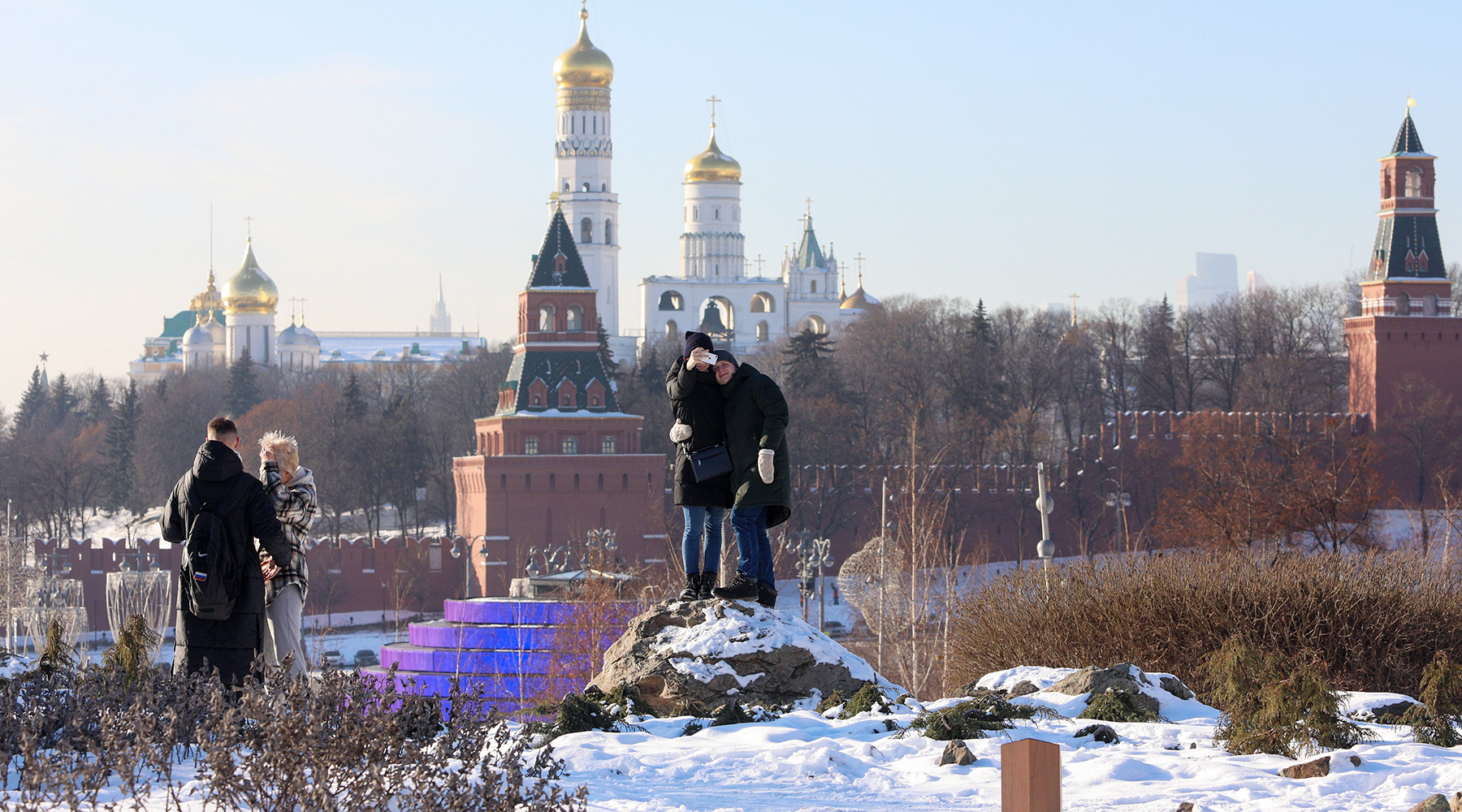On February 3, the Zaryadye Park in Moscow opened the Zapovednoye Embassy scientific and educational center.
According to TASS, starting from Wednesday, Muscovites will again be able to enroll in educational programs in natural sciences for schoolchildren.
The center has not functioned for 10 months.
Zaryadye Park was closed in March 2020, walking and sports resumed in it in the second half of June.
At the end of January, Moscow Mayor Sergei Sobyanin canceled part of the restrictive measures related to the coronavirus pandemic.
Since January 22, public events have been allowed to be held in libraries, museums, exhibition halls and other government-controlled institutions.
In this case, the number of participants should be no more than 50% of the total capacity of the room.
The maximum number of viewers in cinemas, theaters and concert halls also increased - from 25% to 50%.
Park "Zaryadye"
AGN "Moscow"
© Andrey Nikerichev
On January 27, restrictions on night work of discos, nightclubs, catering establishments and other organizations were also lifted.
On January 22, six exhibitions were opened at the Moscow Multimedia Art Museum.
Two of them - "Between imagination and reality" and "Shadow of the soul, but a little sharper" - are associated with the pandemic.
“We must think about distances, and about masks, and about gloves, and about vaccination in the first place.
Because the world is in our hands.
And art sometimes signals us with a flash drive what can happen to us ... Therefore, we wait for spectators in the museum and we look at art as a barometer that shows us what will happen tomorrow, "said the director of the museum Olga Sviblova in an interview with RT.
The coronavirus pandemic and the restrictions imposed because of it also became a source of inspiration for the site-specific artist Marina Zvyagintseva.
Her impressions of self-isolation in the spring of 2020 found expression in the Locked Feelings exhibition, which resumed at the Fabrika Center for Creative Industries on January 29.
Zvyagintseva designed the exhibition hall as a large apartment, in the space of which there are seven interactive installations.
On Monday, February 1, a monographic exhibition by Robert Falk opened for visitors at the State Tretyakov Gallery.
Previously, the artist's work could only be viewed online.
As the director of the museum Zelfira Tregulova explained, the exposition became the first large-scale museum retrospective of the artist's works in Moscow in almost a hundred years.
The Tretyakov Gallery exhibits approximately 230 paintings and graphic works.
“We did our best to bring to Moscow each of those works that were declared by the curators in the catalog, for which it was necessary to go to various regions, even to such distant ones from us as Primorye,” Tregulova TASS quotes.
Falk's previous exhibition with a similar scope of works took place in 1924.
At the same time, the website of the #Moskostoboy project continues to work, which allows you to visit theaters, museums and various cultural events online.
On February 3, two video tours of the New Tretyakov Gallery became available to users.
A tour of the temporary exhibition “Laboratory of the Future.
Kinetic Art in Russia ", which started in the second half of January and will run until May 10, 2021, as well as a video tour" Touch the avant-garde "dedicated to the permanent exhibition.
The restrictions due to the pandemic are gradually being lifted by the authorities of St. Petersburg.
From January 30, cinemas and concert halls in the Northern capital can be filled by 50% (against 25% previously allowed).
On January 31, a concert of the Kino group took place in St. Petersburg.
The team's reunion was scheduled for 2020, but the event had to be postponed due to the coronavirus pandemic.
Funds for holding and recording the concert were raised through crowdfunding.
The total amount was 7 million rubles.
The musicians gathered for the first time since 1990, but in the future they are planning large-scale tours.
Recall that in December, additional restrictions were introduced in the northern capital due to the increase in the incidence of coronavirus.
However, on December 30, the restrictions began to be eased.
Theaters, subject to 25% occupancy of the halls, began work on January 7.
After nine days, the city administration allowed theaters to receive up to 50% of the maximum number of spectators.
Despite the softening of measures aimed at reducing the incidence of diseases, not all sites will be able to continue working.
On February 3, the founder of the Lumiere Brothers Center for Photography, Natalya Grigorieva-Litvinskaya, told TASS about the closure of the exhibition halls at Krasny Oktyabr.
Lumiere Brothers Center for Photography
RIA News
© Kirill Kallinikov
“Exhibition activity is a very large burden on the staff of the Center for Photography, but in the conditions that have developed in Moscow in recent years, its effectiveness has greatly decreased,” Grigorieva-Litvinskaya said in an interview with the agency.
She also stressed that a set of factors influenced the decision.
The last working day of the existing exhibitions is February 23.
In March, on the basis of the center, it is planned to open a private gallery and fund.
The Lumiere Gallery and the bookstore can be visited by prior arrangement and on another site.

